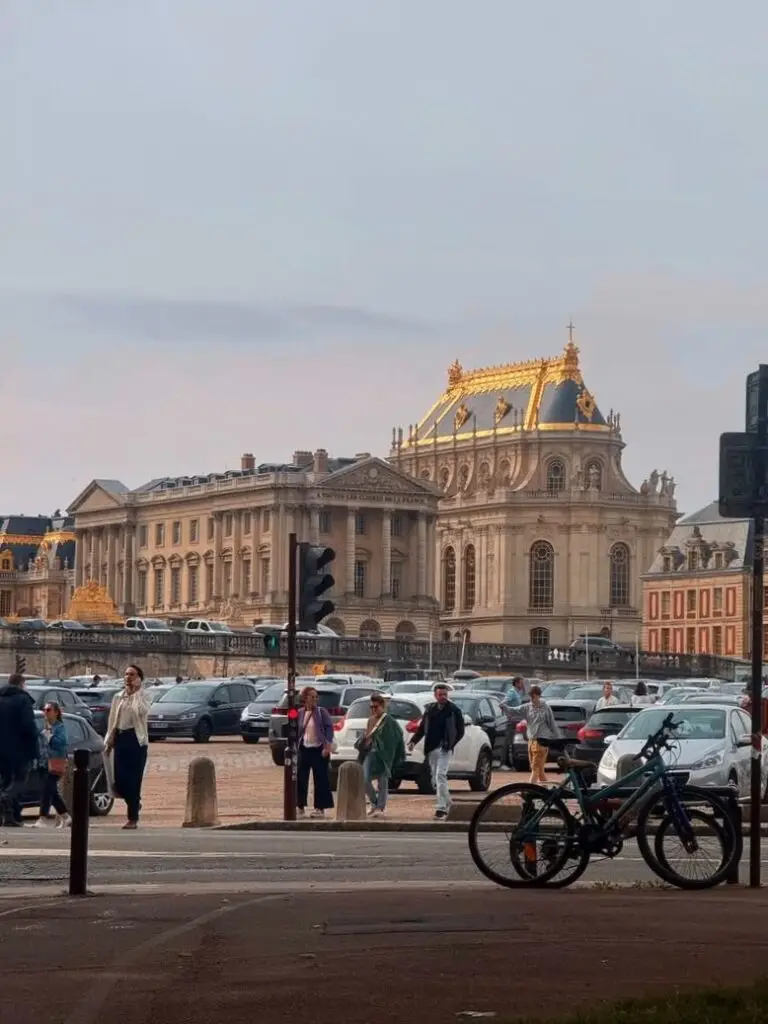Following in the footsteps of Marie Antoinette is like stepping into the heart of France’s most dramatic chapter-where beauty and tragedy, power and downfall, all unfold in gold-leafed salons and shadowed prison cells.
But this guide isn’t just about places—it’s about presence. At Versailles, you’ll glide through the glittering halls where the queen once danced beneath chandeliers. At the Petit Trianon, you’ll breathe in the scent of the roses she adored. And in the stone silence of the Conciergerie, you’ll feel the weight of her final hours.
Whether, like me, you’re captivated by her opulence, moved by her downfall, or simply intrigued by her complex legacy, this journey offers more than history—it offers connection. Ready to walk where she walked, see what she saw, and uncover the woman behind the myth? Let’s go.
Versailles: The Heart of Marie Antoinette’s World
Begin your journey at the Château de Versailles (where else?!). This monumental palace was Marie Antoinette’s official residence as queen, and within its grand halls, she played her public role to perfection. The Hall of Mirrors still dazzles with an opulence that defined the ancien régime.
But look deeper. Beyond the public face of power, Versailles reveals a more personal side of the queen. I highly recommend booking the Queen’s Apartment Tour—it’s one of the few ways to glimpse behind closed doors and see where Marie Antoinette lived away from courtly observing eyes.
Insider Tip: These tours are limited and sell out quickly, so book as far in advance as possible. If you can, try to choose a morning slot—the light streaming into her bedroom is unforgettable. You can thank me later.
Le Petit Trianon: Marie Antoinette’s Private Sanctuary
Tucked within the sprawling Versailles estate lies the Petit Trianon—a small château gifted to Marie Antoinette by her husband, Louis XVI. It became her sanctuary, her personal kingdom within a kingdom. Here, she was free from rigid court etiquette and could shape her environment to reflect her tastes. It was her escape and a wonderful gift from the king.

The Queen’s Hamlet: Marie Antoinette’s Rustic Retreat
Behind the Petit Trianon is the Hameau de la Reine, or the Queen’s Hamlet—a make-believe peasant village complete with a dairy, mill, and vegetable gardens. Critics at the time ridiculed her for playing dress-up as a shepherdess while the people suffered, but walking through the Hamlet today, it feels more like a desperate reach for peace and authenticity.
Personal Tip: Purchase the “passport” ticket. It’s 10 euros extra and includes my favorite, the Queen’s Apartment Tour. It’s a lesser-known 90-minute tour that lets you access the palace before your timed entry, helping you skip the long lines. It rarely finishes early and is packed with lesser-known insights.
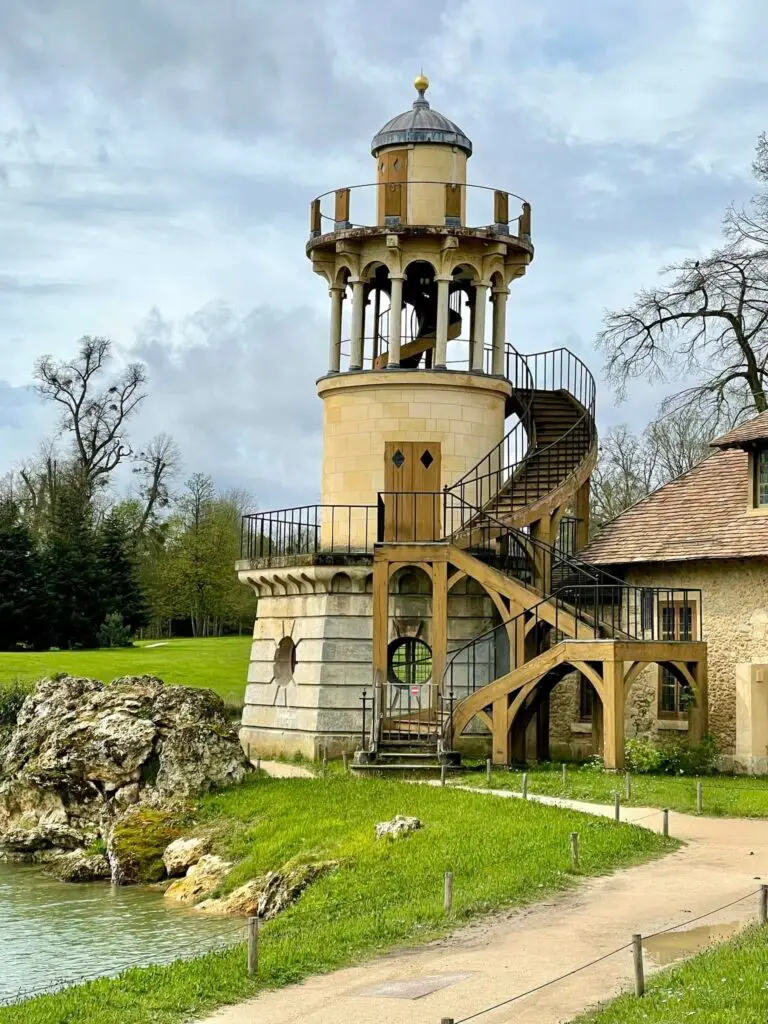
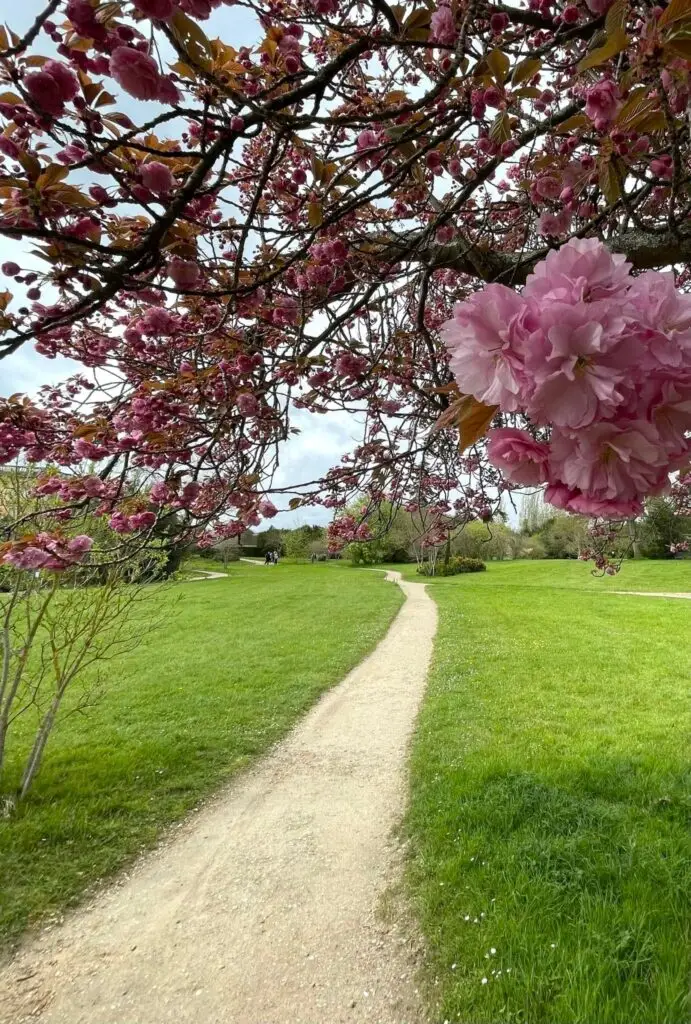
Walk The Final Footsteps of Marie Antoinette in Paris
Unfortunately, understanding Marie Antoinette’s legacy also means facing the tragedy of her final days. These solemn sites reveal the stark contrast between her royal life and her downfall during the French Revolution.
The Conciergerie – Where Marie Antoinette Spent Her Final Days
Located on the Île de la Cité, the Conciergerie was where Marie Antoinette spent her final days before her execution. Today, visitors can step into a recreation of her cell and use a “HistoPad” to view the space as it once was during her time there. The HistoPad interactive digital guide is included with your ticket. It projects a hauntingly vivid image of what her cell probably looked like at the time she was imprisoned, down to the straw mattress and wooden stool.
My advice? Visit in the late afternoon when the light is softer and the tour groups have thinned. Depending on when you visit, there’s often no line, and it offers a surprisingly quiet and powerful experience. The silence makes the history hit harder.
Personal Tip: Consider the Passion Monuments Pass—it gives access to over 70 historical sites across France, including the Conciergerie, and often lets you skip the line. It’s one of the best value passes for history lovers.
Place de la Concorde: The Site of Marie Antoinette’s Execution
Today, this is one of Paris’ busiest roundabouts, but in 1793, this square was called Place de la Révolution, and it was here that Marie Antoinette faced the guillotine. The Luxor Obelisk now marks the center of the space, and a small plaque pays quiet homage to the spot where blood was spilled.
Insider Tip: Stand at the corner nearest the Seine, and take a few silent moments to reflect. It’s hard to imagine the terror and spectacle that once filled this space.
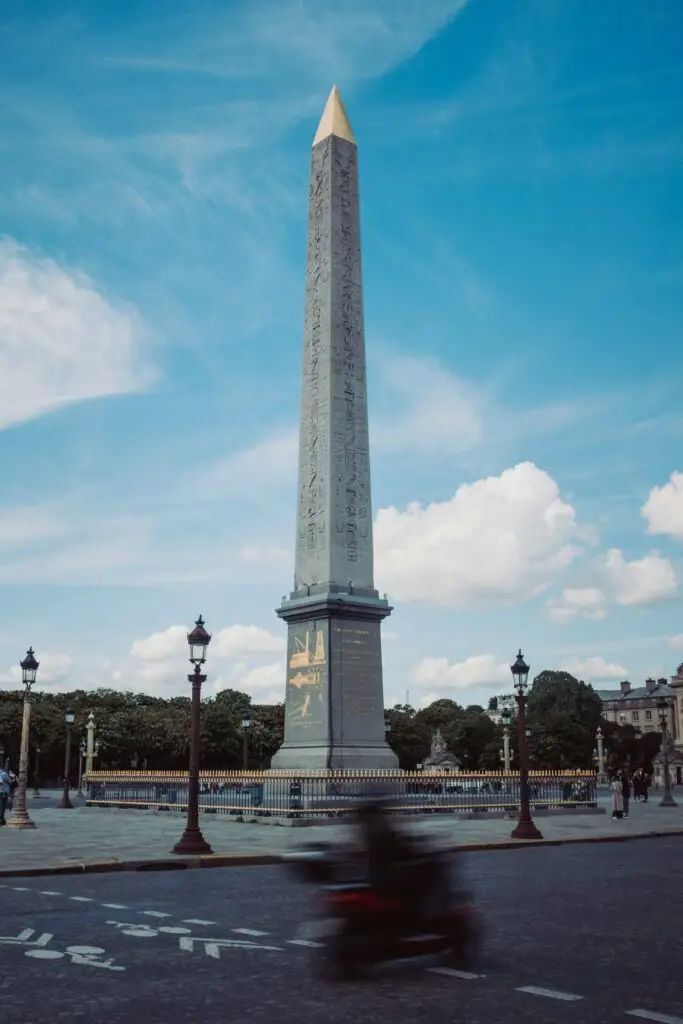
Hidden Marie Antoinette Sites Only History Lovers Know
If you’re interested in learning more about this side of French history, check out these often-overlooked landmarks…
Square du Temple – Prison of the Royal Family
Today, it’s just a leafy (but incredibly beautiful!) square in the 3rd arrondissement. But beneath your feet once stood the Temple Tower, where Marie Antoinette and her children were imprisoned before her trial. Her young son, Louis XVII, died here in horrifying conditions.
There’s only a small plaque to mark it, but if you know the story—and if you carry her name or her memory in your heart—this place will stop you in your tracks.
Before the Conciergerie, Marie Antoinette was held in the Temple fortress. Her two children were also imprisoned here. Her son, the Dauphin Louis XVII, died there at about the age of 10.
For centuries there were rumors and claimants who said that Louis XVII had escaped and another sick child was smuggled into the fortress to replace him. However, the doctor who did the autopsy kept his heart, which the doctor’s family continued to keep and eventually returned to the government of France. In the last 20 years or so DNA tests on that preserved heart put centuries of rumors to rest when it confirmed that it came from the son of Marie Antoinette.
Insider Tip: Visit in the early morning to enjoy without crowds. The quiet and stillness bring the echoes of history closer.
The Chapelle Expiatoire – Marie Antoinette’s First Burial Site
The Chapelle Expiatoire isn’t flashy, and that’s its power. Surrounded by trees and silence, it invites contemplation and reverence. This neoclassical chapel stands quietly in Paris’ 8th arrondissement, built on the site where the royal couple’s bodies were first buried in a mass grave. It was commissioned by Louis XVIII as a symbolic gesture of repentance for his family’s past.
Insider Tip: It’s often uncrowded. Take your time and read the inscriptions. They reflect a nation trying to reckon with its own guilt.
The Basilique Cathédrale Saint-Denis – Marie Antoinette’s Final Resting Place
To truly understand Marie Antoinette’s legacy, you must visit the Basilica of Saint-Denis, the traditional burial place of French royalty. After her execution and initial burial, her remains were moved here in 1815.
The crypt holds both her tomb and that of Louis XVI, beneath beautifully sculpted effigies. Most haunting is the vase that holds the enshrined heart of Louis XVII, their son, whose tragic death in captivity cemented the monarchy’s end.
Insider Tip: Visit the crypt first, then walk through the upper levels to view the succession of royal tombs—it creates a sobering context for her story.
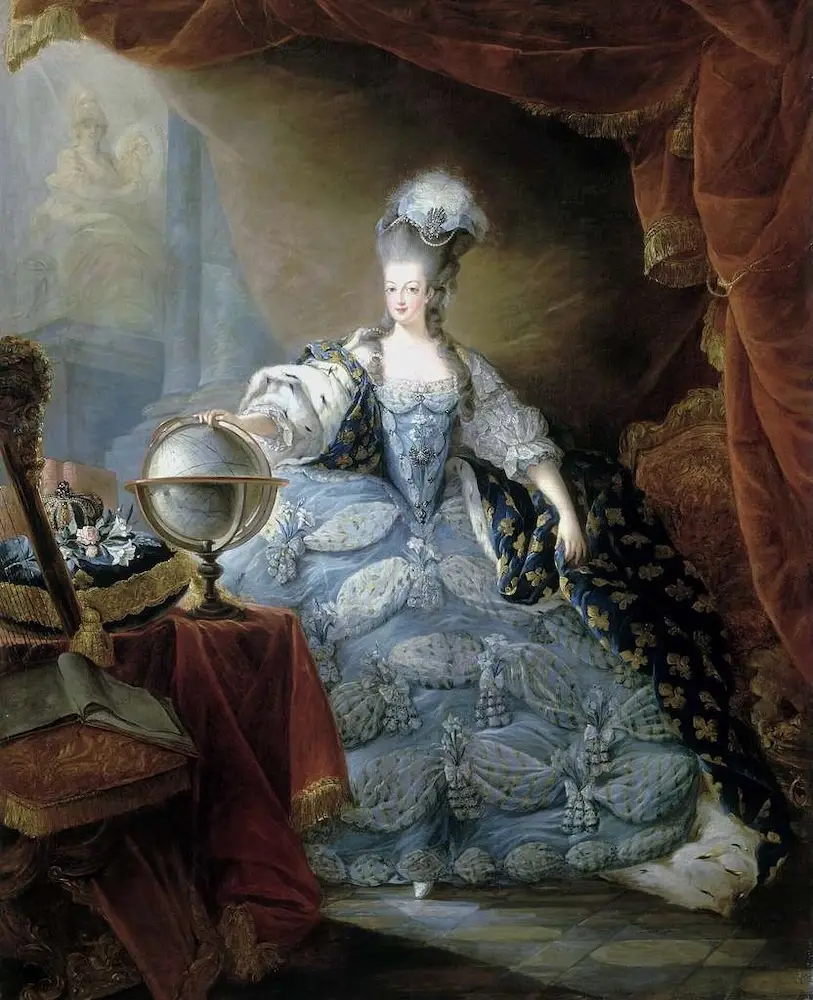
Complete Your Marie Antoinette Journey: Beyond the Famous Sites
If, like me, you can’t get enough of Marie Antoinette and her story, here are some other places you might want to check out.
Château de Compiègne – Where Marie Antoinette Met Louis XVI
Sadly, most of the castles where Marie Antoinette went have since been destroyed but you can see the castle in Compiègne. This château is where Marie Antoinette first met Louis XVI for the first time. If time allows, don’t skip it. It’s beautifully preserved and offers a glimpse of her early court life.
Museums with Marie Antoinette Treasures
Carnavalet Museum – Personal Belongings of the Queen
Dedicated to the history of Paris, this jewel of a museum in the Marais district is dedicated to the history of Paris. It’s displays and artifacts from the French Revolution are excellent and include many of Marie Antoinette’s personal items and letters. It’s here that you can see her writing first-hand. I’ll be honest, seeing her handwritten thoughts really changed the way I thought of her.
The museum was recently renovated and is now one of the best places to contextualize her life in the broader sweep of Parisian and revolutionary history.
Personal Tip: The National Archives occasionally feature her original correspondence—an intimate look into her private life. It’s worth checking in advance to see if they will be on display during your visit.
The Louvre
Among the treasures at the Louvre, visitors can also take a step closer into the footsteps of Marie Antoinette by viewing the elegant travel kit that once belonged to her, and the striking portraits by Vigée Le Brun that reflect how she wanted to be remembered.
Credit: Theodora Shamoun IG: @doras01
Marie Antoinette’s Portraits
You’ll find several important portraits of Marie Antoinette at the Louvre, capturing the complexity of her image as both a glamorous queen and a political figure. These works, primarily painted by Élisabeth Louise Vigée Le Brun—one of the few prominent female artists of the 18th century—offer a rare, intimate view of the controversial monarch.
Vigée Le Brun was not only Marie Antoinette’s official portraitist but also a trusted confidante, which allowed her to portray the queen with a softness and humanity that defied the rigid formality of royal portraiture.
Her paintings, including the iconic Marie Antoinette in Court Dress, were strategic tools of royal propaganda, designed to counteract growing public criticism and present the queen as dignified, maternal, and elegant. Today, these portraits remain significant not only for their artistic merit but also for their historical insight into the final years of the French monarchy, making them a key part of the Louvre’s 18th-century French collection.
Experience Marie Antoinette’s Tastes: Food and Shopping
Nina’s Paris: Marie Antoinette’s Tea Room
Just around the corner from Place Vendôme, Nina’s Paris is a refined, rose-scented tea room that pays homage to Marie Antoinette. The décor evokes Versailles, and their signature Marie Antoinette tea is divine. The Marie Antoinette tea is a unique tea blend crafted from heritage herbs, including actual apples and roses grown in the King’s garden in Versailles.
Drinking her tea feels remarkably personal, as though you’re sharing a secret across centuries. You can also buy a tin of tea as a keepsake, which I think is a meaningful souvenir to take home—something different than the usual postcards and magnets.
Where to Taste Authentic Hot Chocolate
Marie Antoinette loved sweet treats, especially hot chocolate – you need to indulge in a cup during your trip to France!
In Paris, try this royal treat at Angelina or at Debauve & Gallais, her preferred chocolate shop. Debauve & Gallais chocolatiers, founded by Sulpice Debauve, the King’s chemist who made chocolate buttons (“pistoles”) for the queen to hide the taste of her medicine. They still make these chocolates today.
The Queen’s Favorite Paris Shops
Walk along Rue Saint-Honoré where Marie Antoinette’s favorite dressmaker, Madame Rose Bertin, had a boutique. They met almost weekly to discuss fashion, and critics called Rose the “minister of fashion.”
Visit Lubin perfumerie, founded by Pierre-François Lubin who trained under Jean-Louis Fargeon, supplier of the Queen’s perfumes. Fargeon created scented gloves for her using fragrances from hyacinths, violets, and carnations. During her imprisonment, Lubin delivered her favorite toiletries.
Visit Patisserie Stohrer on rue Montorgeuil, Paris’s oldest pastry shop from 1730. The queen may have visited here, as it was opened by her father-in-law’s pastry chef.
Planning Your Marie Antoinette-Themed Trip to France
- Buy the Passion Monuments Pass to access 70+ historic sites and skip lines.
- Plan for crowd control: The Conciergerie is peaceful, while places like Sainte-Chapelle get very crowded. Sainte-Chapelle is breathtaking, but go early.
- Book a themed walking tour: Some offer deep dives into Marie Antoinette’s life and legacy.
- Stay at the Hotel de Crillon, in the Marie Antoinette Suite. This is where Marie Antoinette took piano lessons.
- Take the Marie-Antoinette for a Day tour from the luxurious Airelles hotel in Versailles.
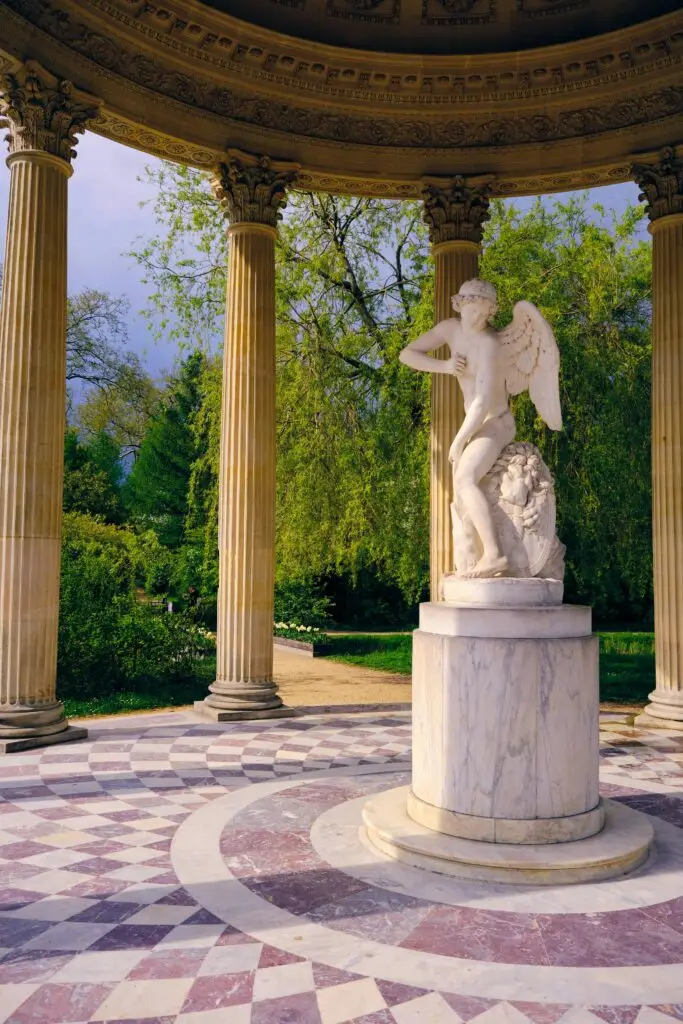
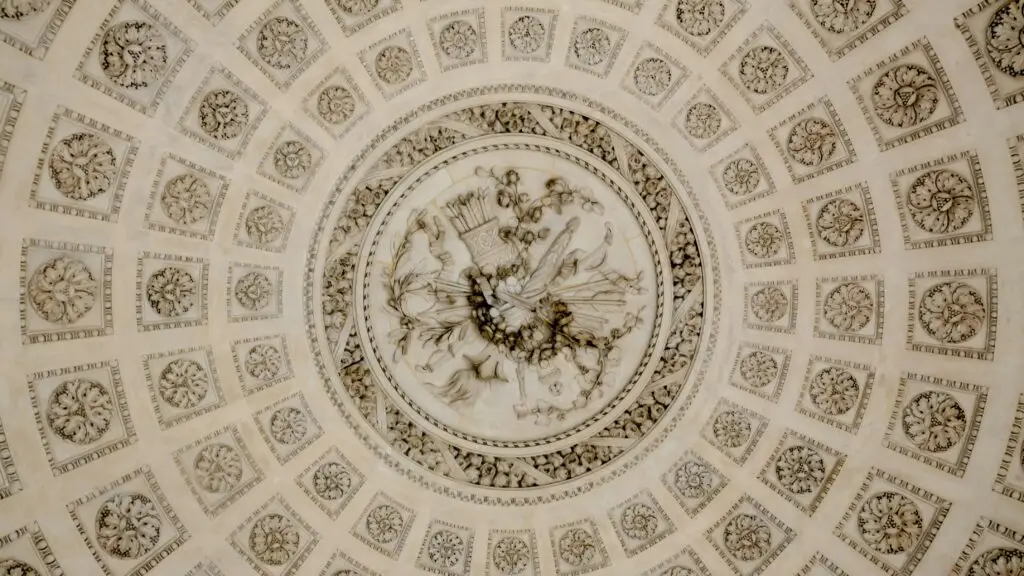
Important Historical Context
- Marie Antoinette never said “Let them eat cake.” This was written by Rousseau before her time.
- Historians now view her as a scapegoat of the Revolution, rather than its cause. Her letters and personal choices show a woman far more complex than history often remembers.
Books and Films to Deepen Your Experience
Before or after your trip, I highly recommend reading Leslie Carroll’s “Notorious Royal Marriages” or “Royal Affairs,” both of which feature vivid, empathetic portraits of Marie Antoinette. They bring color and dimension to the sites you’ll visit.
PBS has a series running titled “Marie Antoinette”. The series offers beautifully filmed depictions of key places and events, much of which was filmed in Versailles. This can help you form a mental map before you arrive in France.
Walking in the Footsteps of a Queen: Final Thoughts
Whether you’re drawn to her elegance, haunted by her fate, or simply inspired by her story, traveling in Marie Antoinette’s footsteps is about more than seeing beautiful places. It’s about understanding a woman shaped by immense privilege and unrelenting scrutiny, who tried—often in vain—to carve out a space for herself in a collapsing world.
These places invite you not only to remember Marie Antoinette, but to meet her: in mirrors and hamlets, in prison walls and garden paths, in quiet memorials and cups of tea.




